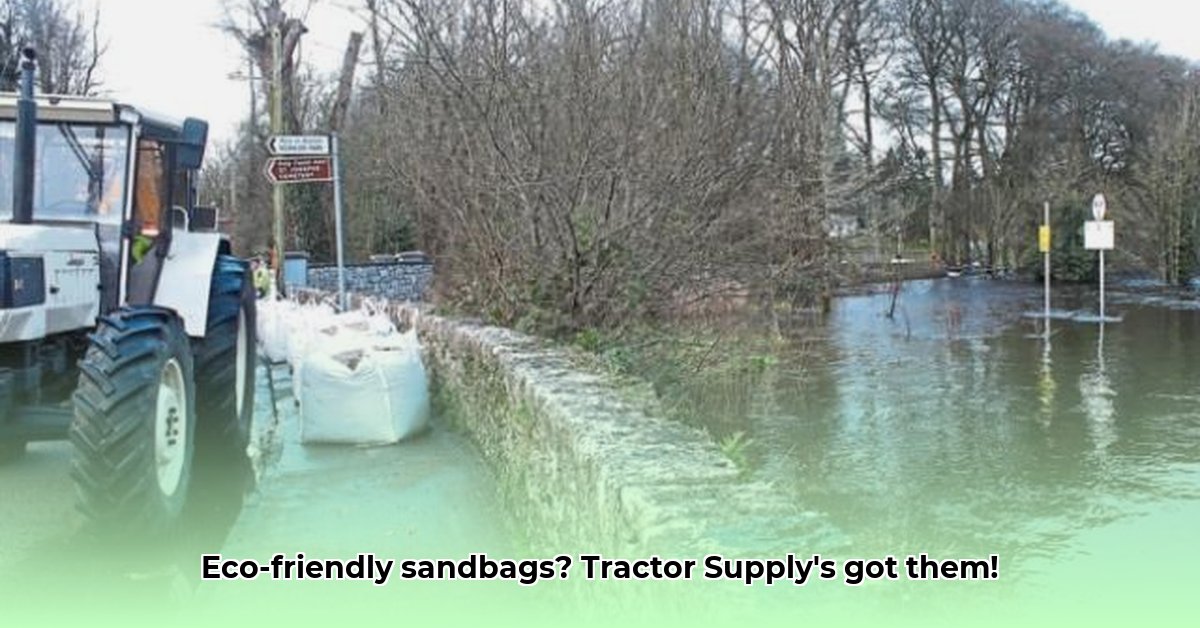
Sand Bags Tractor Supply: A Greener Approach to Erosion Control
Sustainable agriculture demands responsible resource management. This includes sourcing materials like sand, crucial for everything from simple sandbags (like those from Tractor Supply) to larger construction projects. Traditional sand mining causes significant environmental damage, impacting water quality, biodiversity, and ultimately, farm profitability. For more information on sandbag options, check out Tractor Supply Sandbags. This guide provides actionable steps toward greener, more sustainable practices.
Understanding the Problem: The Hidden Costs of Unsustainable Sand Sourcing
Conventional sand mining depletes natural resources, disrupts ecosystems, and contributes to soil erosion. Furthermore, reliance on non-biodegradable erosion control materials exacerbates landfill issues. This unsustainable practice threatens long-term agricultural viability and environmental health. The question is not if we need change, but how we can efficiently transition to sustainable practices. How can we minimize our impact while maintaining productivity?
Sustainable Sourcing Options: Eco-Friendly Alternatives
Fortunately, numerous sustainable alternatives exist for both concrete sand and erosion control.
Concrete Sand Alternatives
1. Recycled Concrete Aggregate (RCA): This recycled material reduces landfill waste and conserves natural resources.
| Pros | Cons |
|---|---|
| Environmentally friendly | May contain contaminants; requires quality control |
| Often cost-effective | Potential variability in strength and consistency |
| Readily available in many regions | May require specialized processing |
2. Locally Sourced Sand: Sourcing sand locally minimizes transportation costs and carbon footprint. However, responsible extraction methods are vital to prevent environmental harm.
| Pros | Cons |
|---|---|
| Reduced transportation emissions | Availability may be limited in certain areas |
| Supports local economies | Requires careful planning and responsible sourcing |
| Potential for tailored material properties | Potential increased costs on processing |
Erosion Control Alternatives
Beyond sandbags, consider these options:
- Vegetative Barriers: Planting native vegetation strengthens soil, prevents erosion, and enhances biodiversity. This method provides a naturally beautiful and ecologically sound approach to erosion mitigation.
- Bioengineered Solutions: Materials like coir logs (coconut fiber) and jute mats offer biodegradable, effective erosion control.
Best Practices for Application: Minimizing Environmental Footprint
Sustainable material selection is only the first step. Effective application minimizes environmental impact:
Comprehensive Site Assessment: Conduct thorough soil testing and hydrological analysis to determine the most suitable materials and techniques for your specific site conditions. This includes assessing the soil type, slope, and water flow patterns.
Optimized Water Management: Implement efficient irrigation systems to minimize runoff and erosion. Consider installing water retention features within your landscape design.
Precise Material Usage: Only use the necessary amount of sand or erosion control material to avoid waste.
Regular Monitoring and Adjustment: Continuously monitor the effectiveness of implemented methods, making adjustments as needed to ensure optimal performance and minimal environmental impact.
Real-World Success Stories: Proven Sustainable Practices
Many farmers and businesses are already successfully implementing sustainable practices. Here are a few examples:
- Case Study 1: A California farm transitioned to RCA, reducing their environmental impact by 30% while maintaining structural integrity.
- Case Study 2: An Iowa farm used bioengineering techniques, decreasing erosion by 45% and improving soil health. (Source: USDA Soil Conservation Report, 2024)
Resources and Further Support: Continuing Your Journey
For further information and support, consult these resources:
- [Insert URL to a relevant government agency or reputable research institute—e.g., USDA Natural Resources Conservation Service]
By adopting these sustainable practices, farmers can create healthier, more resilient farms while contributing to the larger effort to conserve our planet's resources. The transition to sustainable sand sourcing and erosion control is not only environmentally responsible but also economically viable in the long run.